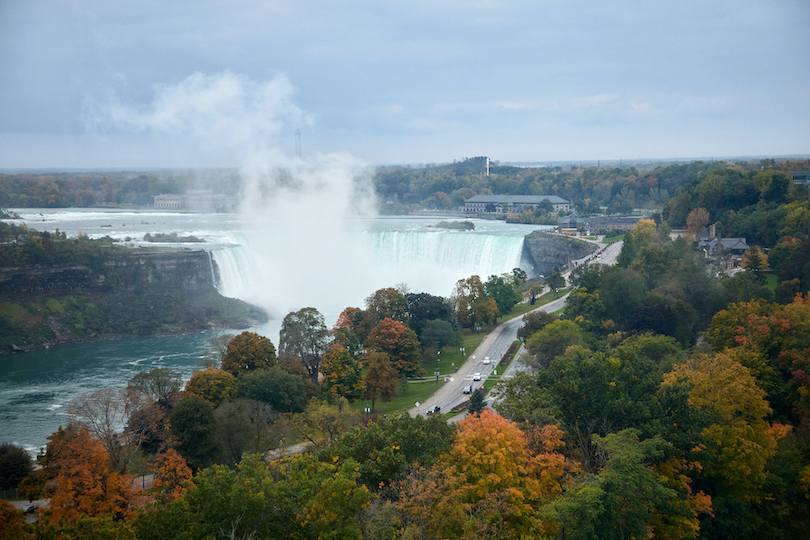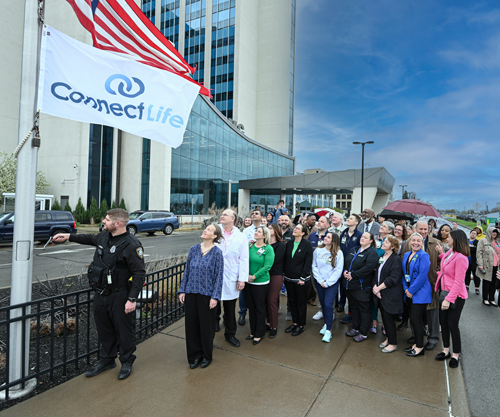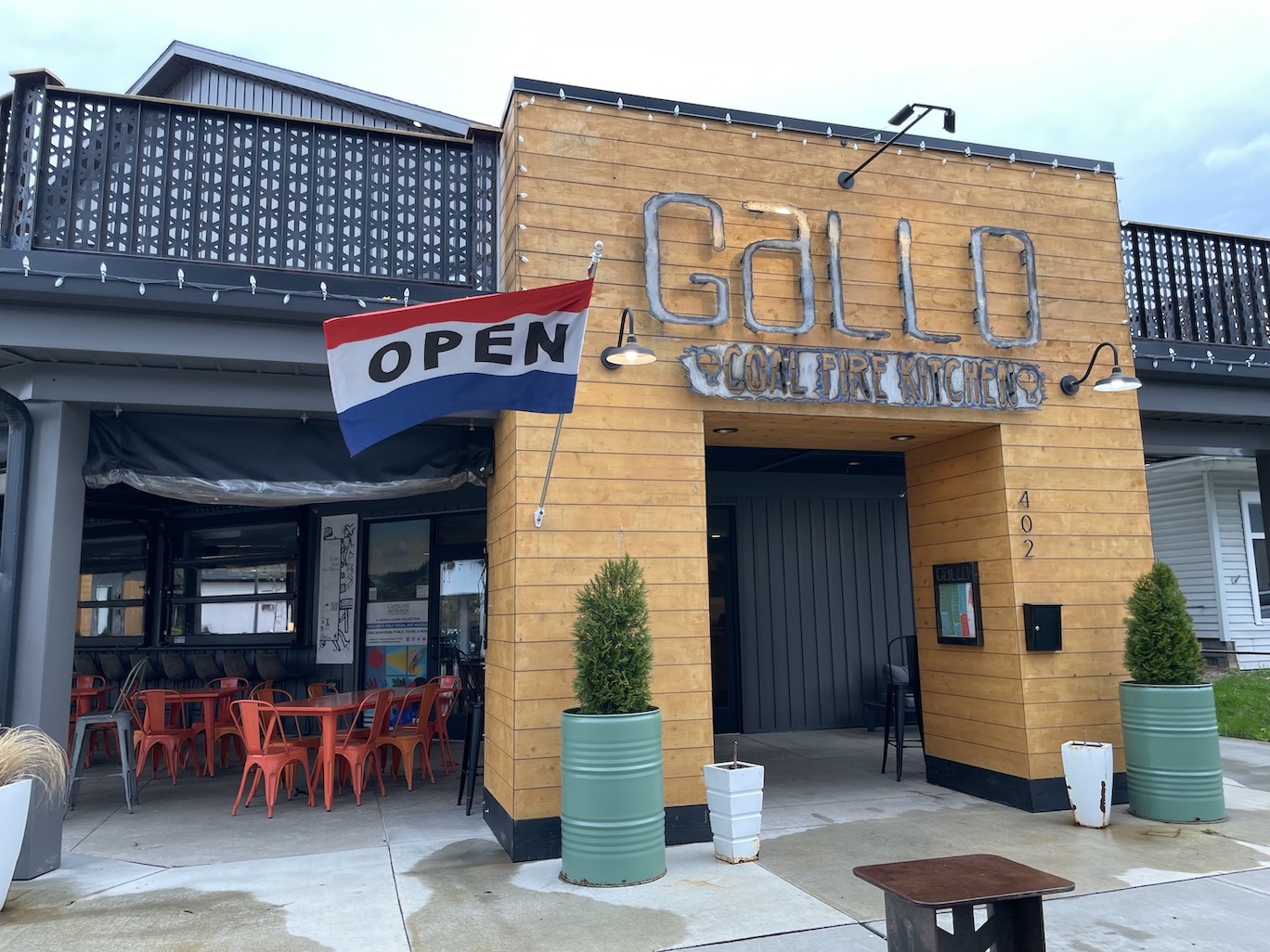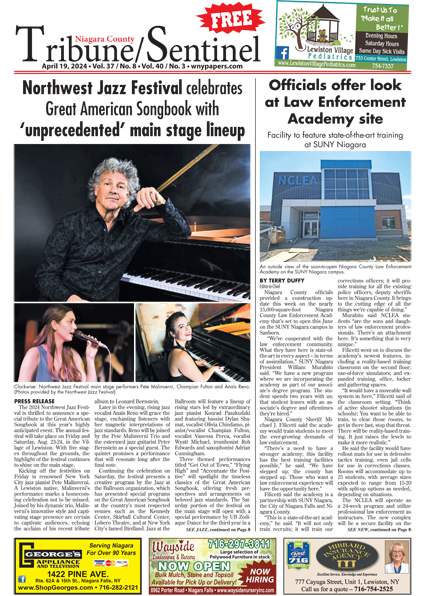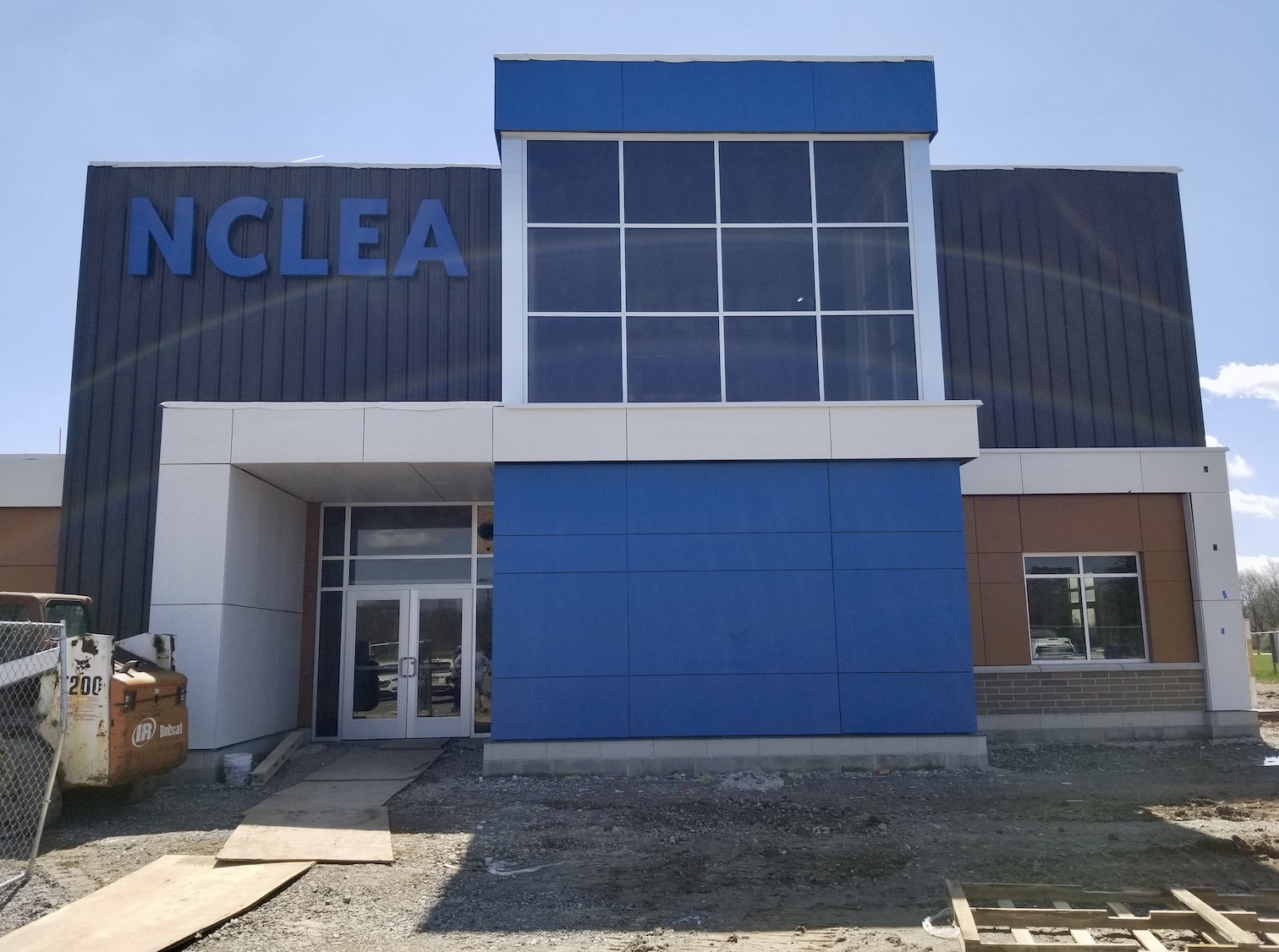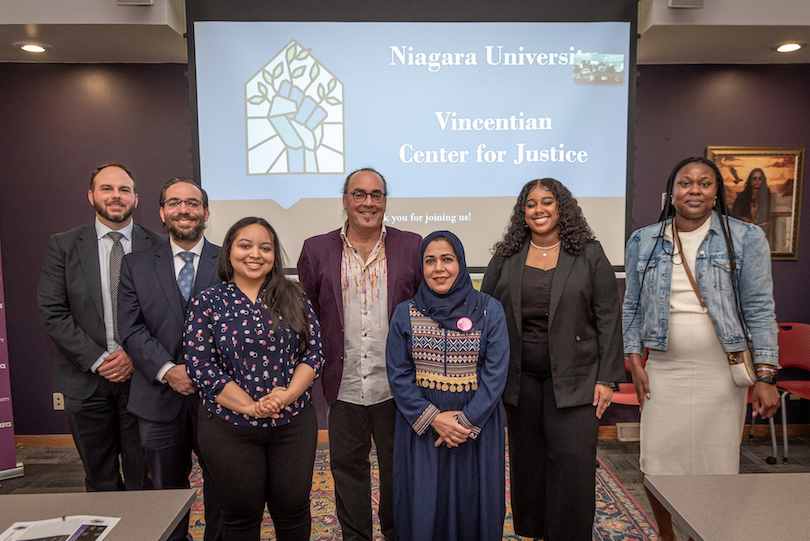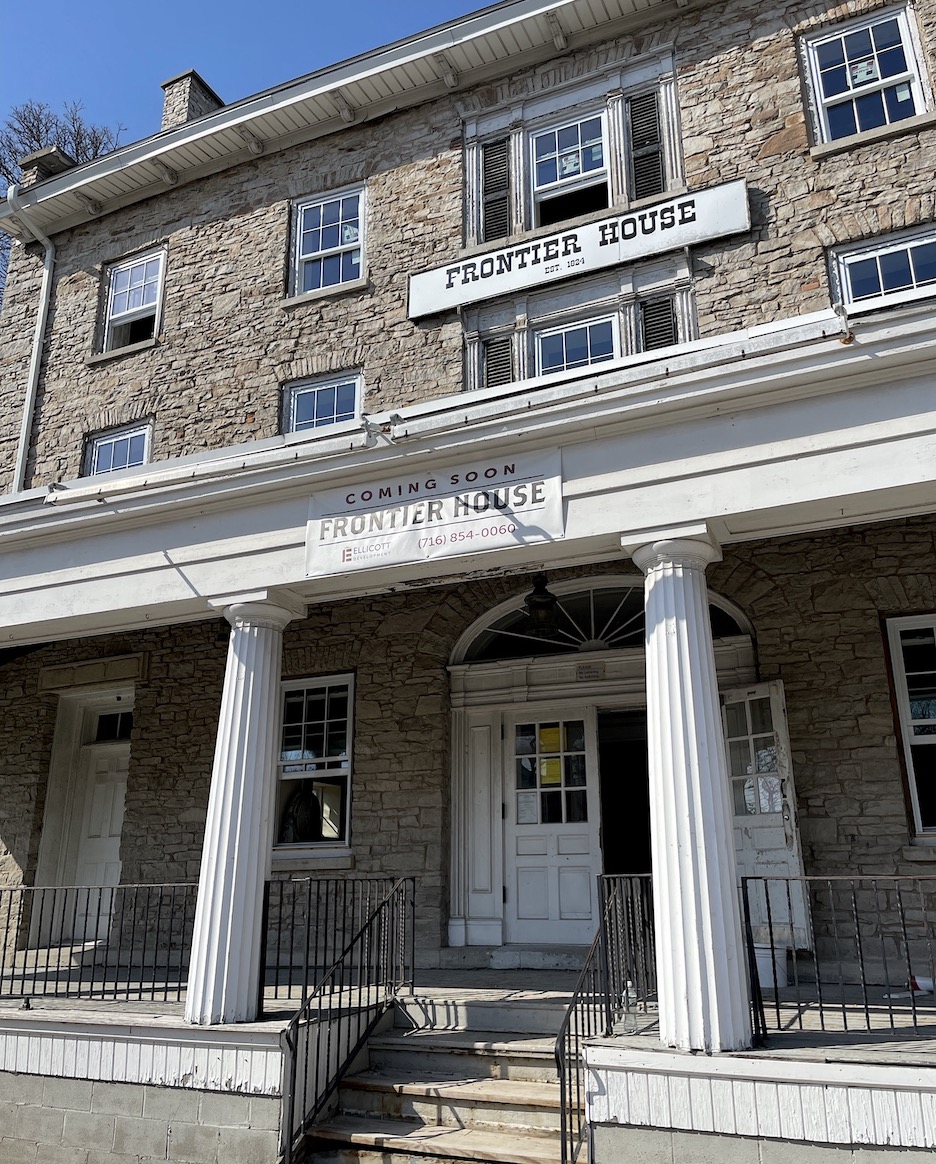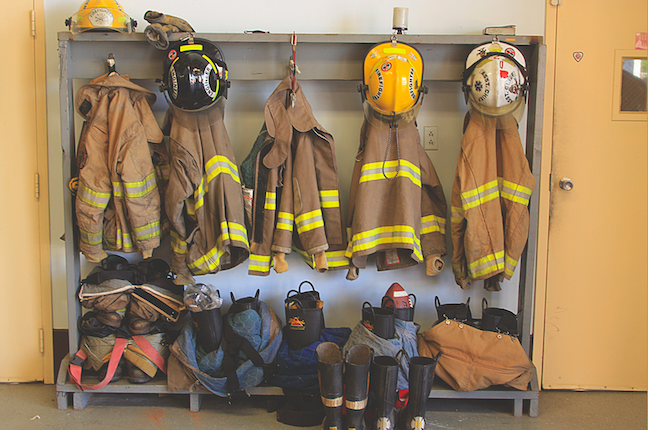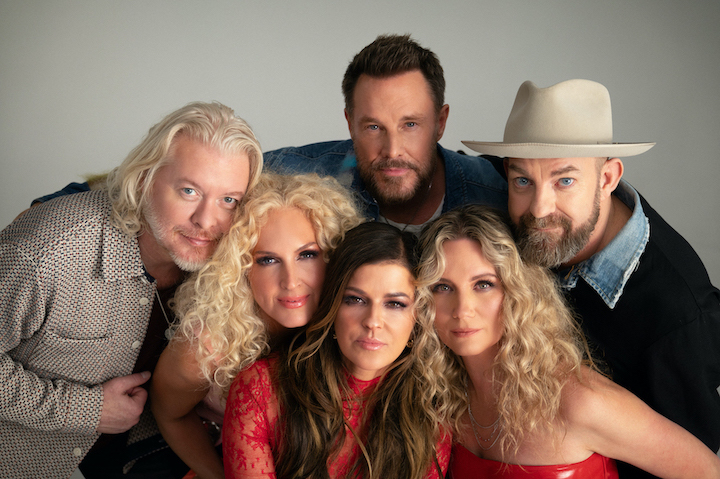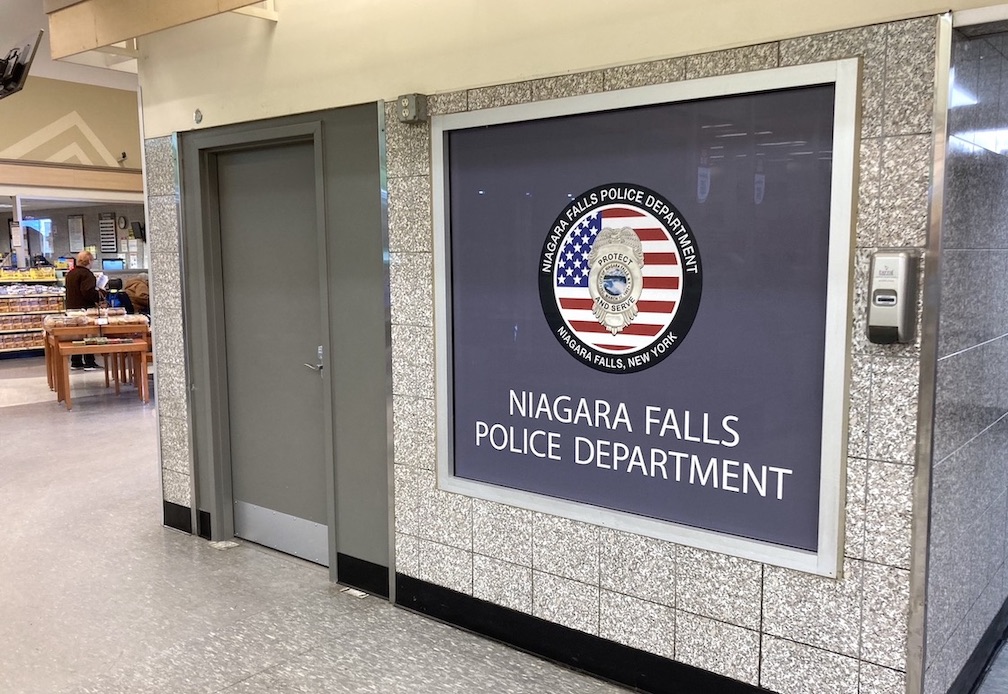Featured News - Current News - Archived News - News Categories
Over $2,200,000 project over a decade in the making has been funded by DEC, Love Canal Trustees, NYPA, NFWF, Coors Seltzer ‘Change the Course’ partnership, Ralph C. Wilson, Jr. Foundation
Article and photo submitted by Buffalo Niagara Waterkeeper
Buffalo Niagara Waterkeeper, in partnership with the Town of Niagara, has completed a decade-long project to protect and restore a critical forested wetland site along Cayuga Creek in the Town of Niagara. The protection of an additional 12 acres in partnership with the Buffalo Niagara River Land Trust in September caps off restoration work on the creek and surrounding ecosystem.
Located just south of the Niagara Falls International Airport and Air Reserve Station on Porter Road, and to the east of Tuscarora Road, the project site is one of the last remaining natural areas along the creek corridor. Restoration within Cayuga Creek has been sought for over a decade. The newly restored and protected acreage will enhance climate resiliency and serve as an important asset within the Niagara River Greenway.
"The restoration and transformation of this land and creek ecosystem will not only help alleviate pressures from flooding, but also restore this natural space as a healthier waterway for all in Niagara County to enjoy,” Buffalo Niagara Waterkeeper Executive Director Jill Jedlicka said. “Like the other projects in Waterkeeper’s successful track record of restoration, this came together through years of cooperative efforts with the Town of Niagara, as well as private and nonprofit partners, for the benefit of the community. We are especially grateful to the Weber family for their land donation to kickstart the project. We are excited that the collaboration with the Town of Niagara and numerous funding partners has endured over the years, and we are finally able to provide a win for both the environment and the people who live and recreate here.”
State Department of Environmental Conservation Commissioner Basil Seggos said, “Promoting sustainable and resilient wetland systems, like this prime example along Cayuga Creek, is a top priority for DEC. With $275,559 in funding from the DEC Climate Smart Communities grant program supported by New York State’s Environmental Protection Fund, and the assistance of many state and local partners, we are restoring this vital tributary to the Niagara River, enhancing ecosystem health, and reducing the potential for climate-driven flooding. DEC looks forward to continuing to work with our partners in protecting water quality and promoting climate resiliency in the Buffalo-Niagara watershed.”
For over a decade, Buffalo Niagara Waterkeeper has led the restoration and protection efforts of this property, which is the largest area of natural land cover that exists along the lower section of Cayuga Creek, and one of the few remaining undeveloped areas of its size and type in the Town of Niagara.
Along with Cayuga Creek flowing through the property, the site contains rare, forested wetland habitat along its northern border, and supports a variety of amphibians, birds, reptiles and mammals.
Over many decades, a combination of water pollution, surrounding development, floodplain loss and creek channel alterations have left the creek’s water quality and habitat impaired, and the surrounding community with persistent flooding issues.
The project area was identified as a priority for protection and restoration for many years, because it offers significant opportunity to utilize living and green infrastructure practices in making progress toward addressing ongoing flooding, increasing community resilience, and addressing other documented impairments, including poor water quality, in addition to providing public access to natural spaces.
Town of Niagara Supervisor Lee Wallace said, “The importance of this project cannot be overstated. The Town of Niagara residents who live in that neighborhood and surrounding area have had to deal with flooding issues since the 1960s, affecting their quality of life, which is unacceptable. It is our hope that this project will help to minimize flooding in the future. On behalf of the Town of Niagara Town Board, I would like to take this opportunity to sincerely thank Buffalo Niagara Waterkeeper for their efforts in making this cooperative project a reality.”
New York Power Authority Regional Manager for Western New York Daniella Piper said, “Through the relicensing of the Niagara Power Project, the New York Power Authority provided important financial support in the early formulation of this valuable habitat restoration project, and in its continued development. Now that it has been completed, we are extremely pleased to know that its ecological benefits are about to be realized.”
In early 2018, the Town of Niagara facilitated the acquisition of the majority portion of this site – 25 acres of ecologically significant land along the Cayuga Creek corridor. Approximately 1,500 linear feet of the creek flowed through the property that has been channelized and disconnected from its historic floodplain. The land was generously donated by Joseph C. Weber Inc., and is now owned by the Town of Niagara. The acquisition was made possible through collaborative efforts of the Town of Niagara, Buffalo Niagara Waterkeeper, Western New York Land Conservancy and the Niagara County Department of Economic Development.
After the majority of the undeveloped land was protected, work began to advance stream and floodplain restoration. The project team spent several years assessing site conditions and developing a plan for restoration that would achieve the greatest progress toward addressing the impairments documented along the creek.
The U.S. Fish and Wildlife Service Partners for Fish and Wildlife Program and a technical advisory committee of local experts assisted with the development of this work. Restoration elements include rerouting the creek to flow in a more natural path to the east of the formerly channelized creek, and reconnecting the creek to its natural floodplain. This helps to absorb and retain flood waters, reducing the impacts of flooding that currently occur in areas downstream of the project.
The new pathway of the creek follows a more natural, meandering path, and includes features like large woody material recycled from on site to stabilize the banks, as well as wetland areas that are connected to the creek and provide additional water storage on site and provide ideal conditions for wetland plant species. These areas will hopefully be utilized by fish, such as Northern Pike, for spawning.
Riffles, runs and pools were placed along the restored stream section to create areas where the water flows over rocks, oxygenating the water and providing habitat for macroinvertebrates, followed by sections of deeper depths and calmer waters. All of these components help restore the creek to a healthier ecosystem and provide climate resiliency for the Town of Niagara.
The restoration solution of rerouting the creek through an entirely new stream channel is the first of its kind in the region. In total, the project created approximately 1,750 linear feet of new stream channel, restored 11.5 acres of habitat, and installed thousands of new native plants, shrubs and trees.
Over the past year, Waterkeeper has also partnered with the Town of Niagara and the Buffalo Niagara River Land Trust to execute a conservation easement for the continued protection of the town-owned property, and to purchase two privately owned adjacent parcels. The Buffalo Niagara River Land Trust’s acquisition of the two parcels was completed in early September, adding permanent protection to an additional 12 acres of undeveloped land with exceptional ecological value along the northern border of the town-owned property. Combined, this work has created a permanent, 36-acre nature preserve in the Town of Niagara. Within these 12 acres, lies potential for further restoration efforts and additional site improvements, such as trails.
Buffalo Niagara River Land Trust President Adam Walters said, “The Buffalo Niagara River Land Trust is pleased to share the news about these properties coming under our stewardship. The area will serve as an important community resource, which can be enjoyed and experienced by both residents and visitors. By providing designated access points and nature trails, we expect increased public use of the site that will connect the community to important water resources and habitats.”
Buffalo Niagara Waterkeeper secured over $2,200,000 in funding to complete this work from the Environmental Protection Fund Title 15 – Climate Smart Community Projects as administered by the New York State Department of Environmental Conservation; Love Canal, 102nd Street and Forest Glen Mobile Home Natural Resources Damage Assessment and Restoration Trustees; New York Power Authority – Niagara Power Project relicensing settlement agreement, and the Fish and Wildlife Habitat Enhancement and Restoration Fund; the Ralph C. Wilson, Jr. Foundation; Sustain our Great Lakes Program through the National Fish and Wildlife Foundation; the Host Community Greenway Fund Standing Committee; the U.S. Environmental Protection Agency; and the Coors Seltzer “Change the Course” Partnership, for the forested wetland protection, site assessment and design, creek realignment and stream and floodplain restoration. The funding and enthusiastic support of numerous partners within this array of stakeholders is gratefully acknowledged.
On behalf of the Love Canal, 102nd Street and Forest Glen Mobile Home Natural Resources Damage Assessment and Restoration Trustees, Ian Drew, U.S. Fish and Wildlife Service New York field office supervisor stated, “The restoration of Cayuga Creek is a critical component of the compensation to the public for contamination of the natural resources from the Love Canal, 102nd Street and Forest Glen Mobile Home Superfund sites. The restoration work to reconnect Cayuga Creek to its floodplain restored the remaining natural creek and wetland habitat along Cayuga Creek and will provide local communities greater access to natural resources.”
Over the next year, project partners will monitor the restored area to ensure it is meeting all project goals and function. The Town of Niagara and Buffalo Niagara Waterkeeper are currently working on developing a plan for long-term stewardship of the site. The intent is for the project site to be accessible to the public in the near future. Waterkeeper has also developed a trails master plan, which will be implemented in phases as funding allows.
“The Cayuga Creek project is such an exciting project that demonstrates how restoring nature can benefit a community, and can address the impacts of climate change,” said JJ Tighe, director of the Parks & Trails Initiative for the foundation. “The collaborative work of Buffalo Niagara Waterkeepers and their partners on this project will mitigate flood risk for residents and businesses while providing access to hiking, biking, birding and fishing opportunities. This project is a great example of how projects can balance public recreation, improved access, and green design.”
Buffalo Niagara Waterkeeper is a community-based nonprofit organization that protects and restores our waters and surrounding ecosystems for the benefit of current and future generations. For 30 years, Buffalo Niagara Waterkeeper has been the guardian of Western New York's fresh water, protecting clean water, restoring the health of ecosystems, connecting people to the water and inspiring economic growth and community engagement. For more information, visit www.bnwaterkeeper.org.
The Buffalo Niagara River Land Trust was established in 2012 to enhance, preserve and protect shoreline properties located along the waterways of Western New York. Its mission is to acquire, remediate and manage potentially contaminated lands along Lake Erie, Lake Ontario, the Niagara River, and their tributaries for ecological protection, and to improve public access to the water and waterfront. To learn more, visit www.bnrlandtrust.org.
The Ralph C. Wilson, Jr. Foundation is a grantmaking organization dedicated primarily to sustained investment in the quality of life of the people of Southeast Michigan and Western New York. The two areas reflect the devotion of Wilson to his hometown of Detroit; and greater Buffalo, home of his beloved Buffalo Bills NFL team. Prior to his passing in 2014, Wilson provided that a significant share of his estate be used to continue a life-long generosity of spirit by funding the foundation that bears his name. Based in Detroit, the foundation began with a grantmaking capacity of $1.2 billion over a 20-year period, which expires Jan. 8, 2035. This structure is consistent with Wilson’s desire for the foundation’s impact to be immediate, substantial, measurable, and overseen by those who knew him best. For more information, visit www.rcwjrf.org.

